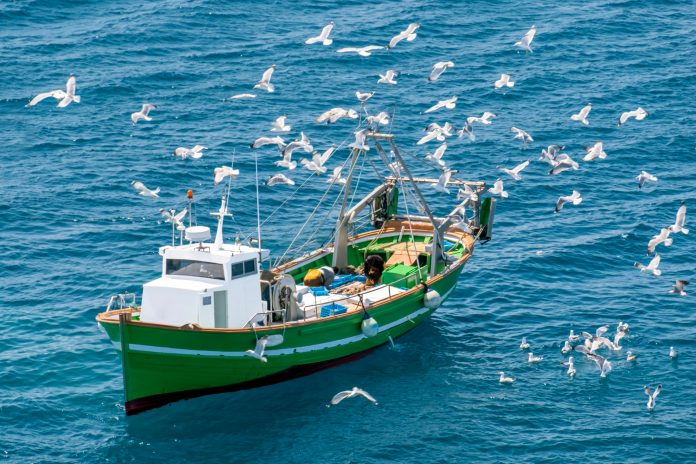Colleen Coyne, Seafood Program Coordinator at Food Export USA-Northeast, discusses how science-based conservation methods are guiding the U.S. seafood industry to foster responsible fishery management
Sustainable seafood refers to fish, shellfish, and seaweed harvested or farmed in a manner that provides for today’s needs while allowing species to reproduce, habitats to flourish, and productive ecosystems to be available for future generations. Unfortunately, consumers sometimes have misconceptions about U.S. fishing practices.
As a global superpower with a vast coastline, there is a stereotype that assumes the U.S. must employ massive factory fleets to catch whatever thrives beneath the waters or that the politics of the moment sways harvesting regulations. Nothing could be further from the truth.
U.S. seafood production is carefully monitored and managed using science-based conservation methods. For wild-capture fisheries, fishery management plans are developed by regional fishery management councils in an open public process. Accountability and transparency are vital elements. By law (1), councils must: “Consider social and economic outcomes for fishing communities. Prevent overfishing. Rebuild depleted stocks. Minimize bycatch and interactions with protected species. Identify and conserve essential fish habitats”. (2)
Managing wild stocks sustainably in ever-changing ocean conditions requires continuous monitoring. Regularly conducting species abundance and distribution surveys ensures fishery management actions and decisions are based on the best available science.
U.S. wild-capture fisheries are scientifically monitored, regionally managed, and legally enforced under ten national sustainability standards (3). The iconic wild- capture fisheries for American lobster and Atlantic sea scallops of the northeast U.S. are prime examples of how managing a resource for sustainability also leads to sustained profitability.
Protecting U.S. wild-caught American lobster
U.S. American lobsters (Homarus americanus), also known as Maine lobster, are bottom-dwelling, solitary, territorial crustaceans that regularly shed their exoskeleton to grow. Lobsters molt 20-25 times (over five to eight years) before reaching legal harvestable size and sexual maturity. Maine is the largest lobster-producing state in the nation. Fishing is conducted from small boats, typically carrying a crew of two.
Laws to protect the lobster resource (4), such as requiring a minimum harvestable size and prohibiting the taking of egg-bearing females, were initiated as far back as the early 1870s. Other conservation methods include:
- Limited entry and a limited number of trap limits per vessel.
- Escape vents for juveniles.
- Ghost panels that biodegrade if a trap becomes lost at sea.
- V-notching a tail flap of egg-bearing females before returning them to the sea to create an easily recognized mark that remains for up to two molts to protect proven breeders from harvesting.
Fishery managers rely on scientific data to manage the resources and to fish effectively. Since 1963, abundance and distribution studies have been conducted every spring and fall throughout the U.S. range of the American lobster. This survey also constitutes the world’s longest and most comprehensive standardized measure of distribution and abundance trends in commercially harvested seafood worldwide.
Managing the Atlantic sea scallop resource
The U.S. Atlantic sea scallop fishery is another example of how science is critical to managing this resource. Video and still-camera images have brought a new level of accuracy and precision to abundance estimates for scallops. Working together with the commercial sea scallop industry, scientists regularly video-survey the entire scallop resource (approximately 60,000 km2 of the ocean bottom), the world’s largest video survey of the sea floor.
Atlantic sea scallops (Placopecten magellanicus) are managed using a combined approach of effort limitation (limitations on days-at-sea and crew size) and rotating harvest areas, which maximizes scallop yields while protecting beds of young scallops. Rotational closures of fishing areas for five years at a time allow scallop harvesters to take advantage of a scallop’s natural rapid growth between three and five years of age when the animals more than double in weight. By waiting, scallop harvesters yield more meats per shell and a more profitable product.
Successful management of the sea scallop resource has led to more profitable fishing, reducing the average length of an individual fishing trip and enabling vessels to reach their per-trip catch quota faster. Gear changes to expand selection tendencies toward larger scallops have helped to improve yields, decrease discards, and minimize the bycatch of other species. This fishery now supports the largest landings in its history and is the world’s largest and most valuable wild scallop fishery (5).
The U.S. American lobster and Atlantic sea scallop fisheries are global examples of how safeguarding natural resources creates sustained profitability and ensures a safe seafood supply for future generations.
References
- https://thesustainabilityalliance.us/magnuson-stevens-fisheries-management-conservation-act/
- https://courses.lsa.umich.edu/healthy-oceans/group-2/group-2-sub-1/
- https://www.fisheries.noaa.gov/national/laws-and-policies/national-standard-guidelines
- Fishing failure and success in the Gulf of Maine: lobster and groundfish management, https://link.springer.com/article/10.1186/2212-9790-13-8
- The Atlantic Sea Scallop: A Fishery Success Story, https://storymaps.arcgis.com/stories/5c7e77ff4db0464bb2ea598e766b9764











